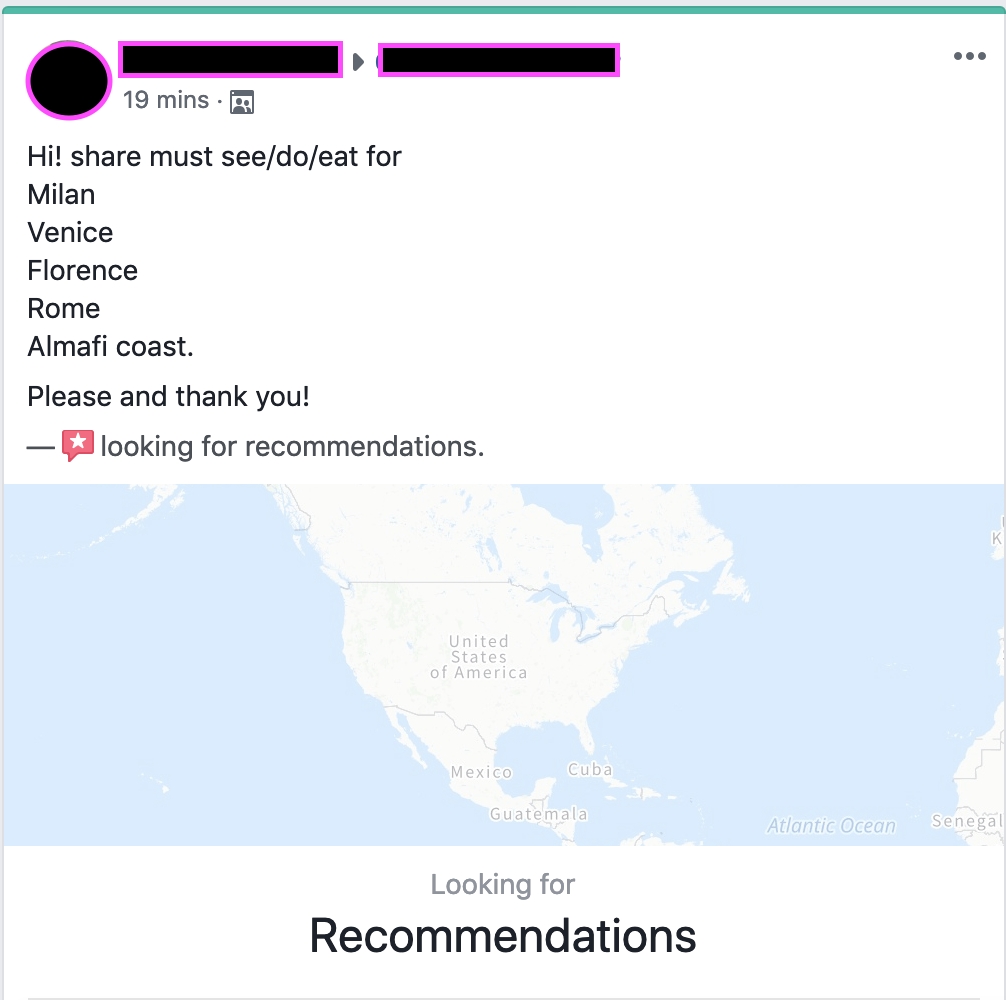
Not long ago, mainstream travel meant finding a place that was relatively convenient — resorts that had been vetted by travel agencies, easily navigable cities with strong tourist infrastructures, and destinations that were either a direct flight or, at most, a single connection away from home. Going off-the-beaten-path was only for the most rugged, devil-may-care vagabonds who were willing to put up with grueling 40-hour bus rides, language barriers, and byzantine visa requirements.
Those days are long gone. Just take a look at Instagram or Facebook and you’ll see friends off visiting places that once felt inaccessible to the American traveler (save for the most intrepid types). This effect is thanks, by and large, to advances in technology — which is not only making travel safer but easier and more accessible, while also helping us share our adventures in new and exciting ways.
As the world gets seemingly smaller, the entire industry is seeing seismic shifts. Finding off-the-beaten-path restaurants is easier than ever and we have access to photos, travelogues, and other digital details any time we want to track down a secret waterfall or hot spring. Rather than spending most of their time just hitting up the big museums and historical sites, travelers are digging in and exploring further afield. That’s a good thing, obviously.
Here are more ways that the future of travel is combining global access with a hyper-local ethos.
Going beyond the guidebook and straight to the source
Though guidebooks are still handy — compact, chock-full of information about lodging, attractions, food and drink, and cultural ephemera — lugging around one of those puppies is not only relatively expensive (with some guidebooks clocking in at $30 or even $40), but they’re also limited in what they can offer, giving extremely limited space to smaller, less popular towns and new or otherwise unknown events and attractions.
Thanks to the internet, you can go straight to the source by looking up local blogs and even alt-weeklies or other local cultural publications in the areas you want to visit. That means access to up-to-date events calendars rather than being beholden to a short list of popular festivals and sometimes-outdated smatterings of bars and restaurants. For example, guidebooks will tell you about Portland, Oregon’s Waterfront Blues Festival, which takes place over the Fourth of July, but Willamette Week, the city’s chief alt-weekly, can fill you in on all the small shows, restaurant openings, and alternative happenings that will make your trip a little more bespoke and a little less crowded by vintage-era blues fans.
Better planning thanks to social media

Social media excels when it comes to planning trips that go beyond the typical itinerary. You can use Instagram geotags to look up a country or town you’d like to visit, find some posts you like, and dig deep into the IG feeds of local users. If you’re not sure where to start, check out some popular travel photographers on Instagram and see what location-specific geotags and hashtags they use, then start digging.
Don’t sleep on Facebook either. There are innumerable travel-focused Facebook groups you can join, from women- and GNC-only groups to budget travel to dark tourism, where you can ask for advice from thousands of travelers, many of whom can offer up insider tips for the biggest cities and the most deeply hidden corners of the planet. Whether you want to spend a few days in a swanky hotel right next to the Plaza de Armas in Cusco or do a homestay in Munaypata just below the Pumamarca ruins, you’ll surely find someone who can help guide you.
Staying in unexpected or otherwise inaccessible places
If you’re not exactly a big city person, chances are you won’t love where most hotels are located — usually smack in the middle of the action. Not only does this not reflect most residents’ actual lives in a particular place, it also has a tendency to put you on the well-trodden paths of those who came before you. But gone are the days when you either had to know someone or tap into the old-school couch-surfing network to get out of the tourist district.
Thanks to rental platforms like Airbnb, VRBO, and HomeAway (and, yes, CouchSurfing, which is now an app and not just a clumsy web 1.0 forum), you can find apartments and homes in every kind of setting. Looking for a little more quiet time? How about staying in a loft in a converted textile mill in Manayunk, a suburb of Philadelphia that has plenty of bars and restaurants but isn’t as busy as staying in, say, Rittenhouse Square? And thanks to the proliferation of local public transit planning websites and apps, and ride-sharing apps like Uber or Lyft, you don’t have to worry about access: you can stay in a neighborhood that you like and navigate your way around, thanks to your phone.
Alternatively, instead of staying in a city or using your blood, sweat, and tears to find remote lodging that doesn’t stick you in the middle of a 500-person resort, you could stay in any number of easily-searchable, private cozy log cabins in, say, the Colorado Rockies.
Discovering the city’s every day delights
Well-seasoned travelers know: there’s a tourist’s version of a city, and then there’s the every-day version. Neither one is better than the other; they’re just different. Still, sometimes you get museum fatigue and you just want to post up at a cool cafe.
Before technology became part of the fabric of travel, that usually just meant walking around until you found something suitable. In 2019, with Google at the touch of a button, you can look up whatever you want on the map function (which you can download if you need to save data) and get real-time reviews. Pro-tip: look for spots with reviews from local guides. Those are people who write a lot of reviews in a particular area, which means they’re locals and usually know what they’re talking about.
There are also plenty of apps that do the work of a hotel concierge, giving personalized recommendations based on local knowledge. Take City Walker, which will give you suggestions for food, drinks, shopping, cultural attractions, and more, all within a 15-minute walk of your current location—and all suggested by locals.
Breaking out of the big cities
There was a time when global travel for Americans meant sticking to where there was public transport and, depending on the country, a high concentration of English speakers. Well, bye boring. Now everything from transportation logistics to communicating with people who speak a different language is taken care of.
Want to go hiking and maybe even stay in a small town somewhere you don’t speak the language? While you’ll probably have to rely on wild gesticulation at least a little bit, you can also use Google Translate to formulate questions and even take pictures of signs in foreign languages so you can figure out whether or not you’re about to accidentally break the law. Alternatively, there are apps like iTranslate, which offers live translation of more than 100 languages (16 offline). Or standalone talk-to-translate devices like Pockettalk. Or try TripLingo, which has phrasebooks, instant voice translation, and even the option to connect to a live translator.
App developers have also made it easier than ever to do things differently and really get to know a region. I if you’re the type who likes someone to plan your days for you, but you want to do something a little different, there are always apps like Klook, which offers heavily discounted travel activities. Which means that you can do things like get out of the chaos of Kuala Lumpur and explore the Cameron Highlands while learning about local tea productions and other local economic drivers. Or spend a day shopping at the Sydney fish market, exploring wine country, then making a nice meal with a local chef.
And, of course, none of this would be possible if you couldn’t get to where you wanted to go. Which is why flight search websites and apps, like Skyscanner and Kayak, are so clutch to making the world more accessible than ever. You’re no longer beholden to what’s on sale at your closest airport. Instead, these companies almost instantly bring you thousands of cheap flight choices, including low-fare days, multiple destinations, and all airports within a certain radius, maximizing your ability to find flights and easily get to destinations you otherwise might not have even known about.
Plus, the internet has proven shockingly adept at finding and highlighting error fares — which is where the true savings hide.
***
If the future of travel is defined by any one thing, it’s a lowering of the barriers to entry. Making one of the world’s greatest ways to spend time more rewarding and egalitarian than ever.






